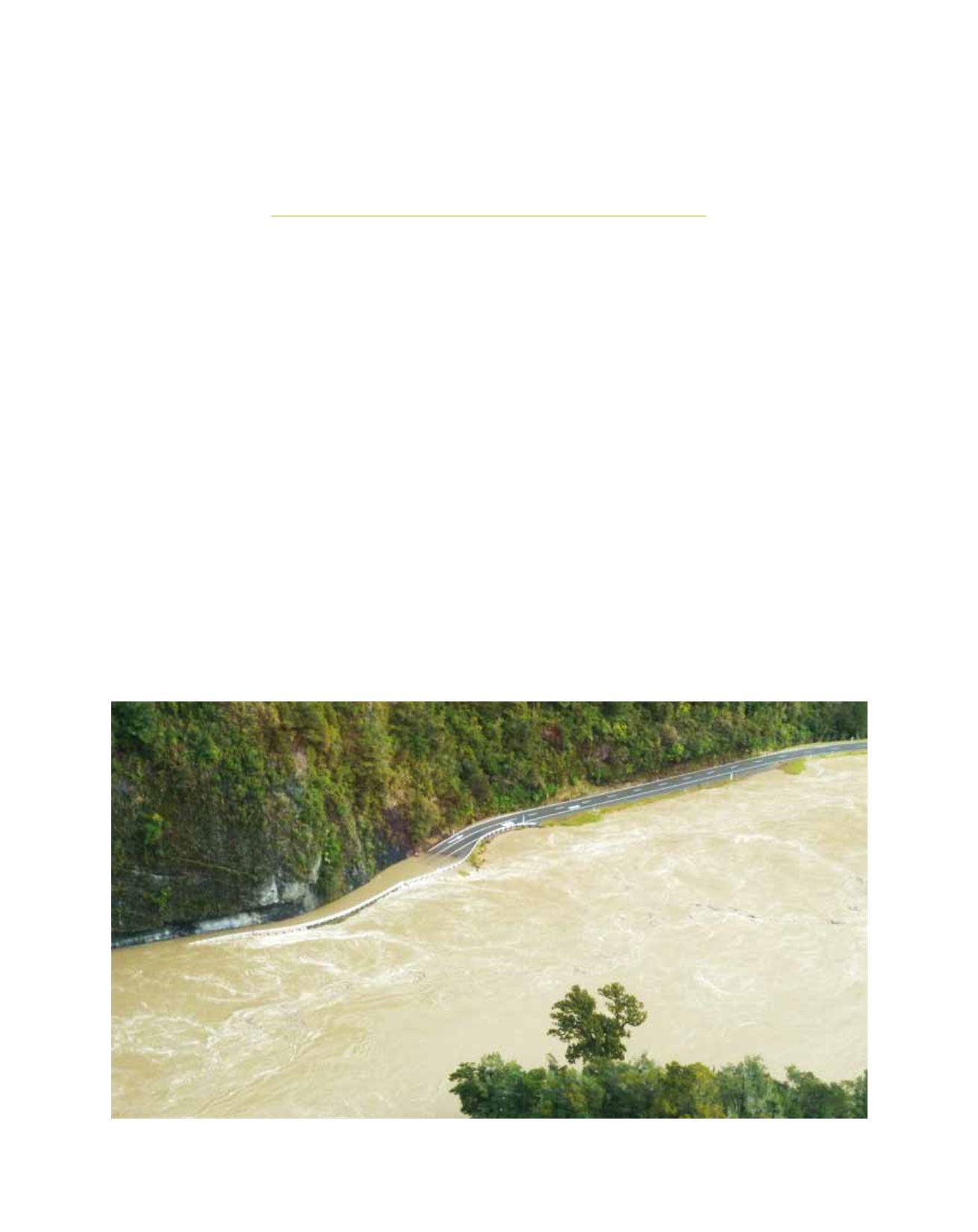

[
] 220
New Zealand’s climate change
and urban impacts toolbox
Andrew Tait, Principal Climate Scientist,
National Institute of Water and Atmospheric Research, New Zealand
1
N
ew Zealand needs communities that are resilient to
climate change and the hazards that come with it. The
Impacts of Climate Change on Urban Infrastructure and
the Built Environment Toolbox
is designed to help city, district,
regional and central government identify opportunities and
reduce the impacts of climate change.
2
Around 75 per cent of the NZ$1.5 billion insurance payout for
damages from natural hazards in New Zealand over the last 40 years
(prior to the recent Canterbury earthquakes) was for weather related
hazards.
3
These hazards are expected to increase in future because of
climate change, perhaps greatly so if international efforts to reduce
greenhouse gases are not significant.
4
Urban environments are particularly vulnerable to extreme weather
and flooding events (including coastal storm surge), and are also
where the majority of New Zealanders live for all or most of their
lives.
5
Urban environments contribute significantly to economic activ-
ity and the country’s gross domestic and gross national product, and
U
rban
I
ssues
Flooding of the Buller River on 25 July 2012
Image: West Coast Regional Council
contain most of the country’s educational, cultural and
health facilities, both in number and significance. Urban
environments also contain the majority of the country’s
public and community investment, and much of its
private investment.
The
Impacts of Climate Change on Urban Infrastructure
and the Built Environment Toolbox
is designed to provide
guidance and decision tools that can be used by urban
council staff and policy makers to reduce the potential
harm caused by projected climate changes. The toolbox
will help city, district, regional and central govern-
ment identify opportunities and reduce the impacts of
climate change. It follows a science-based risk assess-
ment process
6
and demonstrates methods of identifying
adaptation options and evaluating their benefits. The
tools build on and frequently reference existing climate
change guidance material, available from New Zealand’s
Ministry for the Environment.
















